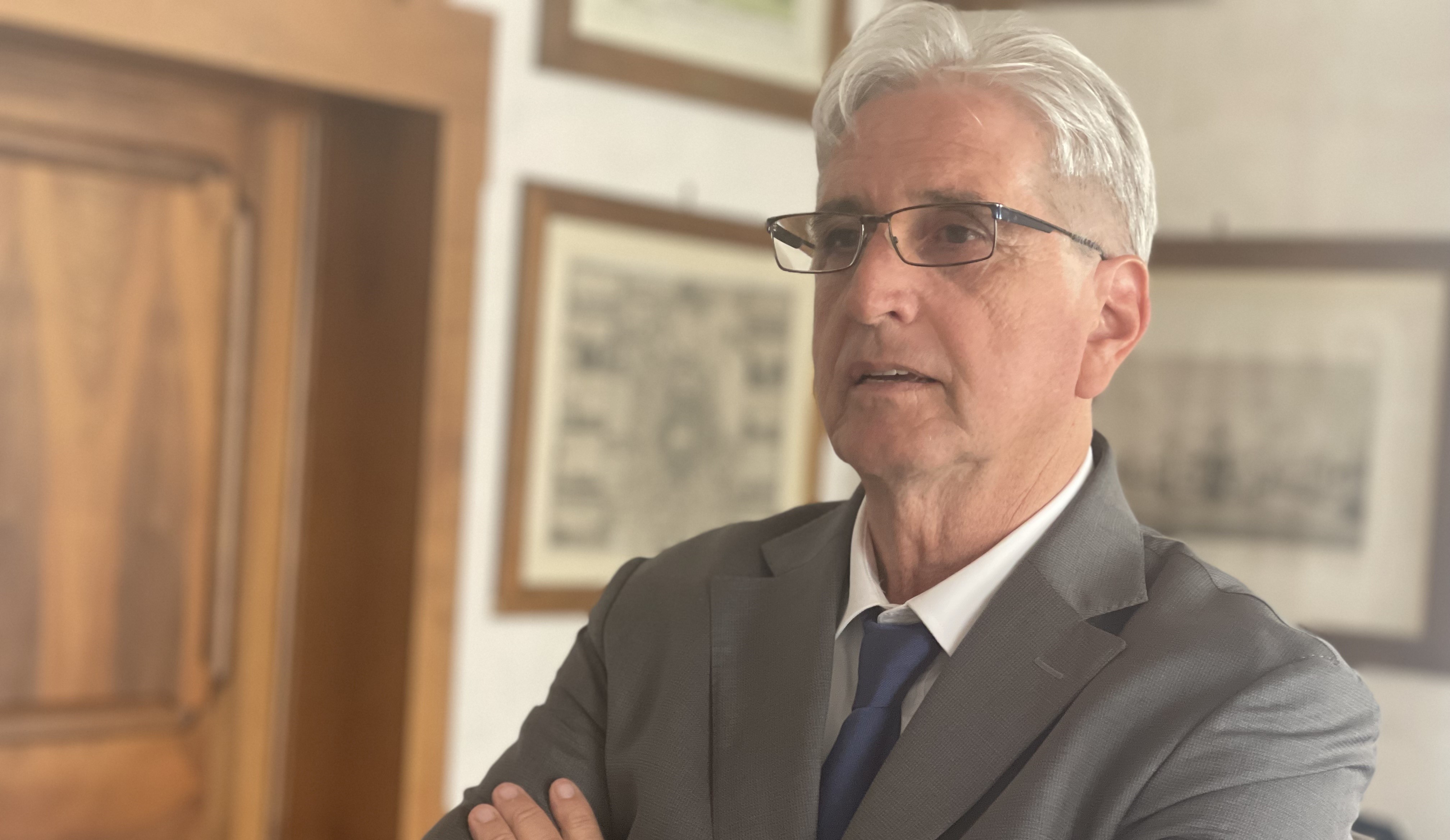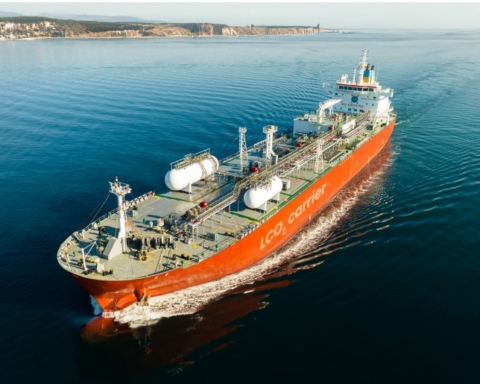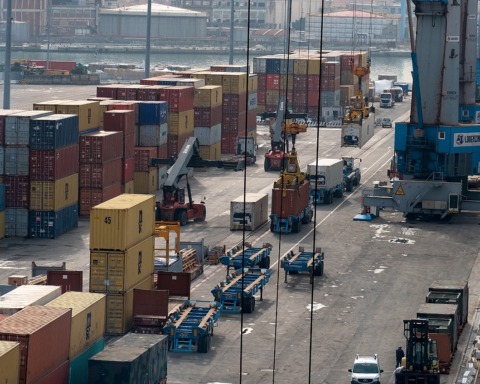More infrastructure and last-mile investments; new cooperation strategies in the Mediterranean area and greater local regional synergies. The President of the North Tyrrhenian Port Network Authority, Luciano Guerrieri, charts the course for the future of its network ports.
Livorno Port’s leading figure took stock of the economic scenario and its impact on shipping in front of representatives from its Management Committee and the Partnership Body, in a meeting also attended by the Regional Councilor for Productive Activities, Leonardo Marras, and the Municipal Councilor for Ports, Barbara Bonciani.
“The Red Sea crisis,’ he says, ‘is only the latest in a series of systemic crises that have been affecting the shipping industry over the last few years, putting the entire logistics chain under stress and, with it, the just-in-time approach that, up until 2020, supported globalization processes.”
The pandemic, the Ever Given running aground in March 2021, and the impact of the Russia-Ukraine conflict on the supply of raw materials and rising consumer prices, the drought problems in the Panama Canal, and the war between Israel and Hamas. “All these crisis scenarios have clearly been critical moments for shipping, presenting continuous challenges for Italian ports”, Mr. Guerrieri admits, pointing out that the consequences of the substantial blockade of Suez are now there for all to see: “More and more ships opt for longer sailings, re-routing to the Cape of Good Hope to avoid passing through the Strait of Bab al-Mandab, which has meant vessels arriving late and in some cases led to a noticeable drop in traffic, as many Italian ports have registered.”
Livorno port has not been significantly affected by this situation, except for new car traffic from the Far East. While this market segment hasn’t witnessed any real drop in traffic it has been subjected to increasing inconvenience due to vehicle delivery delays.
However, the president of Livorno’s Port Network Authority (PNA) does not intend to minimize the impact that the crisis has had on the manufacturing system and consumer spending: “There is no question,” he says, “that the North Tyrrhenian ports are currently going through a difficult time, just like the other Italian ports.”
Mr. Guerrieri quotes the (still provisional) traffic data for Q1 2024 to support his point-of-view: “Between January and March,” he explains, “Livorno port recorded a drop in almost all types of traffic, in particular containers, forest products and new cars. The only positive exceptions are ro-ro and passenger traffic.”
It is a difficult scenario that closely mirrors what local manufacturers are going through: “IRPET’s 2023 data shows a trend in our regional economy that is still positive but continually slowing down, with production in key sectors such as paper falling by 19% in November and 26% in December 2023.In the fourth quarter of 2023, Tuscan industrial production was down 2.7%” the Port Authority’s President points out.
The lack of momentum in domestic and foreign demand, which has characterized the whole country and, more generally, the entire euro area, has clearly had negative repercussions on port employment. In the first quarter of 2024 the number of port company worker shifts was 8.6% less compared to the same period last year (down from 57,427 to 52,447)
Hence “no port can escape unscathed from an international context in which cyclical and unpredictable crises occur one after the other as regularly as night follows day.”Faced with a complex and, at times, worrying international scenario – this is the PNA president’s message – various initiatives must therefore be put in place to seize new development opportunities, also in view of updating the Port Network Authority’s new Three-Year Operating Program, which is due to be presented at the end of June.
“The development of infrastructure remains a priority” according to Mr. Guerrieri. “The PNA has set up 13 infrastructure projects in this period and another 25 projects are about to go out to tender.” There is not only the Darsena Europa facility on the horizon: ‘We need additional resources to develop the new areas of port competence, which go beyond the strictly maritime logic: sustainability and digital transition are two central themes which the port authority is working on with great determination. We believe that institutional changeover in Brussels, could likely lead to new funding opportunities opening up for developing projects in the port-logistics sector, along the lines of what we have seen with NEXT-GEN EU.”
Another strategic issue is cooperation with non-EU Mediterranean countries. “Globally, the nearshoring and reshoring processes have long since begun to represent a valid answer to the vulnerabilities of supply chains. The relocation of factories and suppliers to countries closer to Europe, often those we are on friendly terms with, is favouring economies close to the most important markets, such as Morocco, Egypt and Turkey. It is therefore becoming essential to forge closer relations with these countries and to develop a foreign port policy that allows us to adapt to the new industrial clusters that will emerge.”
Mr. Guerrieri admits that it this is where the PNA intends to particularly concentrate on: “In June we will conclude an agreement with the port of Damietta. Our aim is to start weaving our own network of business ties with the Maghreb countries.”
This strategy has to be in tandem with another i.e. the port system’s logistical and intermodal development. From this perspective, while, on the one hand, Mr. Guerrieri stresses the strategic importance of the new overpass, that will offer freight trains a direct link between the port of Livorno and Vespucci freight village, on the other, he hopes that the process of setting up a Simplified Logistics Zone (SLZ) in Tuscany will be concluded as soon as possible. “This is a fundamental step for relaunching our regional area. It is an issue that must be discussed thoroughly in order to understand which incentives have to be put in place to attract new manufacturing set-ups.”
In its own small way, the PNA is already doing its part: if at the national level, the Ferrobonus (an incentive to support the combined rail transport mode- Translator’s Note) and Marebonus (an incentive to encourage freight transport by sea rather than by road- Translator’s Note) represent a programmatic response to the criticalities of an Italian logistics system strongly characterized by the predominant use of road transport compared to more environmentally sustainable modes such as rail and sea routes, the PNA has developed a kind of Bonus Manovra (Manoeuvre Bonus) for rail operators in the port – freight village system.
“It’s just a drop in the ocean,” Mr. Guerrieri adds. However, overall, these initiatives represent a tangible incentive to boost the integration and sustainability of the rail-sea-road logistics chain and hence reposition the entire local logistics system on more competitive levels.
‘We need to be able to develop an industrial policy capable of creating new synergies at a macro-local regional level, between the coast and the Tuscan hinterland, but also with central Italy, where logistics performance as a whole shows a twenty-point gap compared to the national average,’ Mr. Guerrieri points out.
At the same time, new spaces and areas have to be found for developing intermodality: “Vespucci Freight Village,’ he says, ‘needs additional areas to optimise its vocation as a logistics hub for its port.”
The PNA has announced that it wants to get to work immediately on these issues, following a list of priorities that the institutional representatives and operators present at the meeting Mr. Guerrieri had convened all agreed on. Councillor Marras said it was crucial to speed up setting up the SLZ, as it provides a real link between ports, freight villages and airports, while Councillor Bonciani believes an observatory on the Red Sea crisis has to be opened in Livorno to monitor the situation.
Translation by Giles Foster




